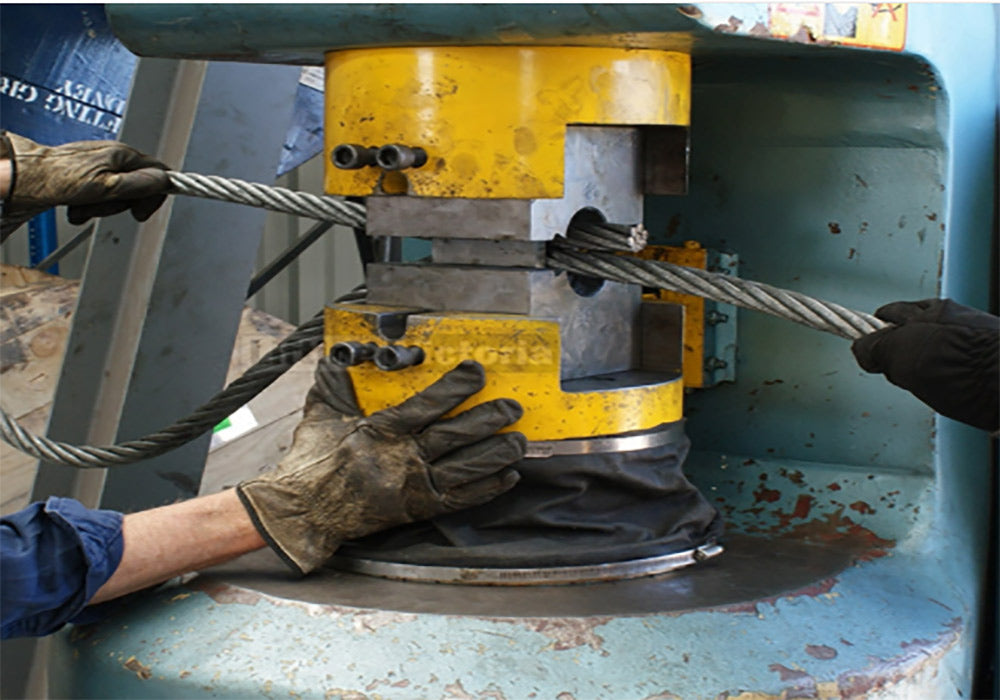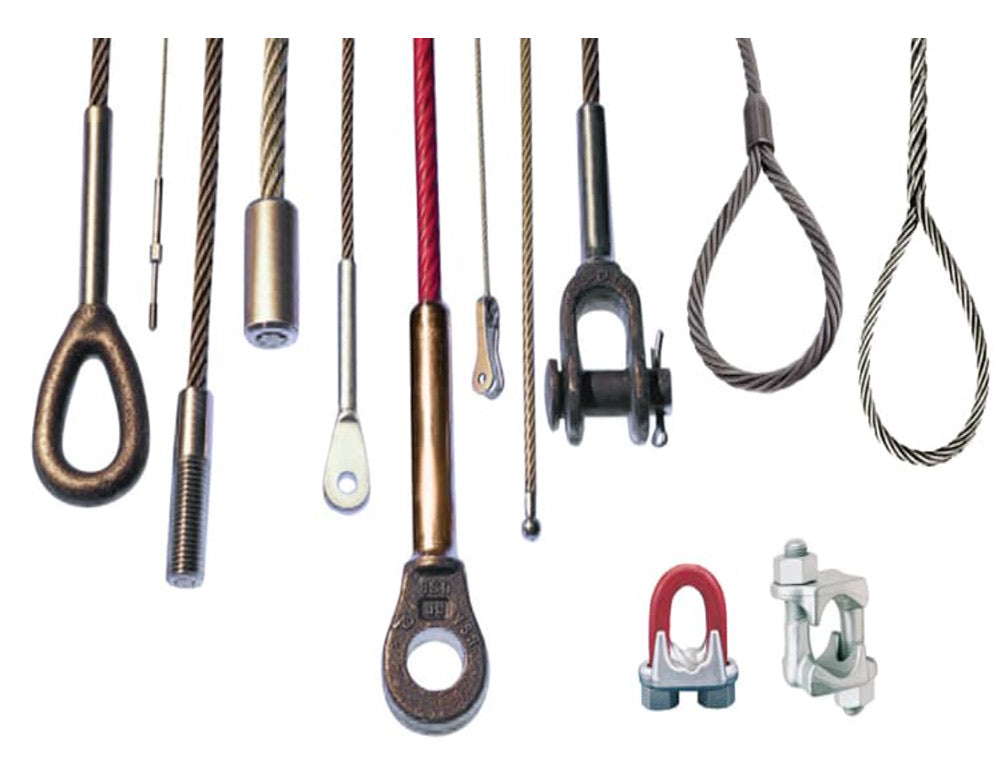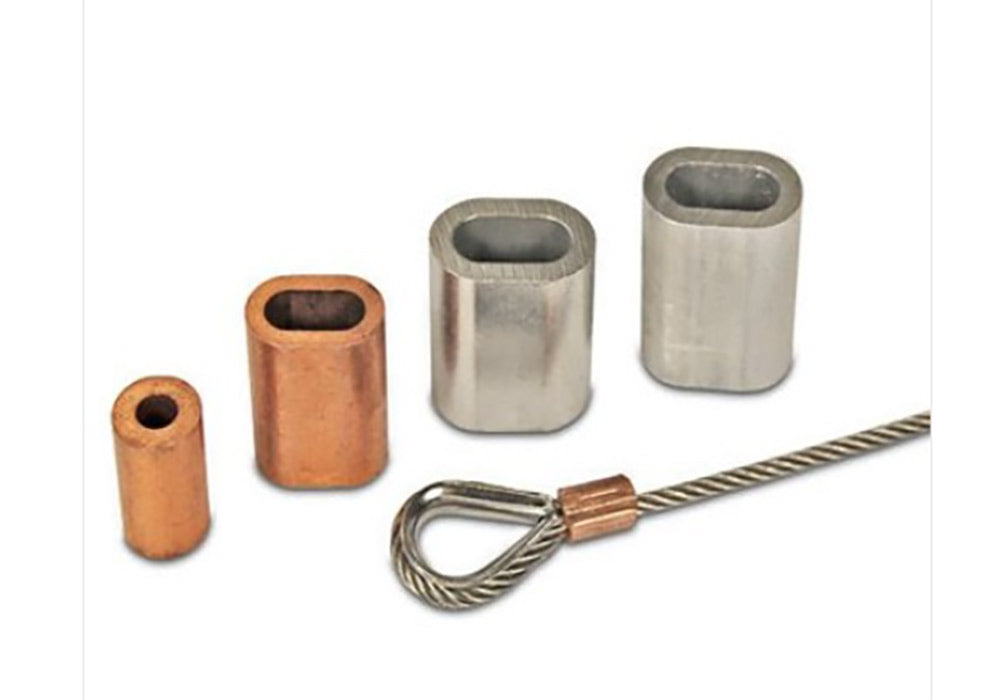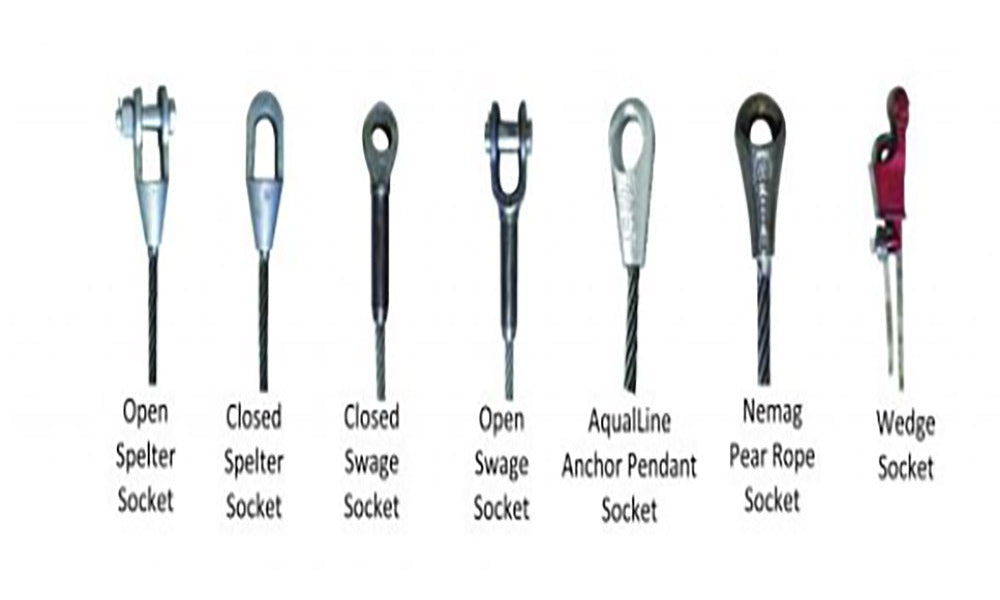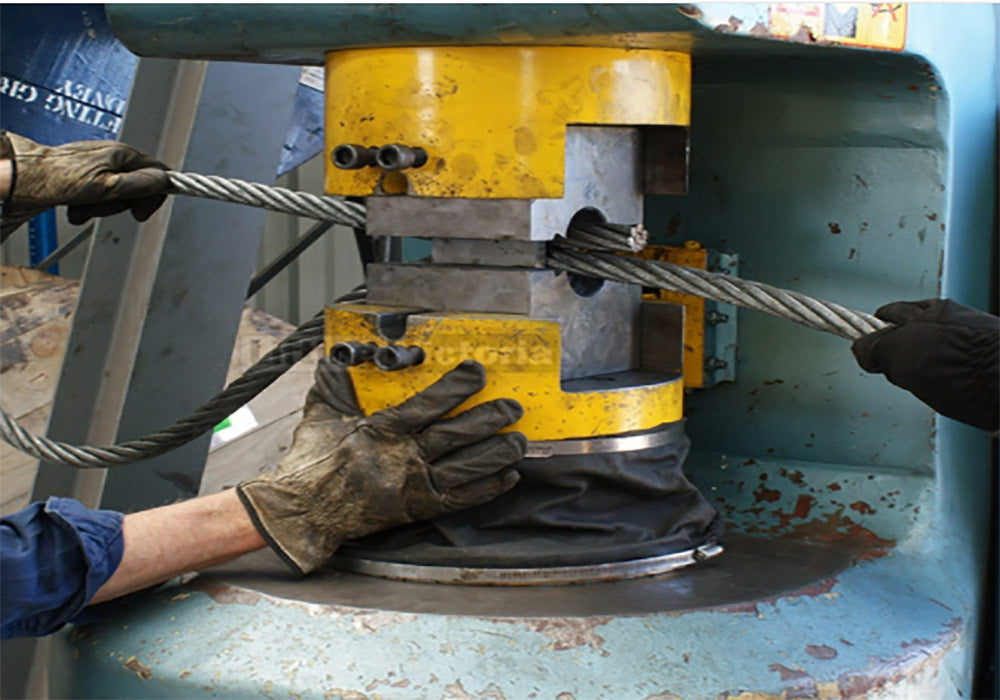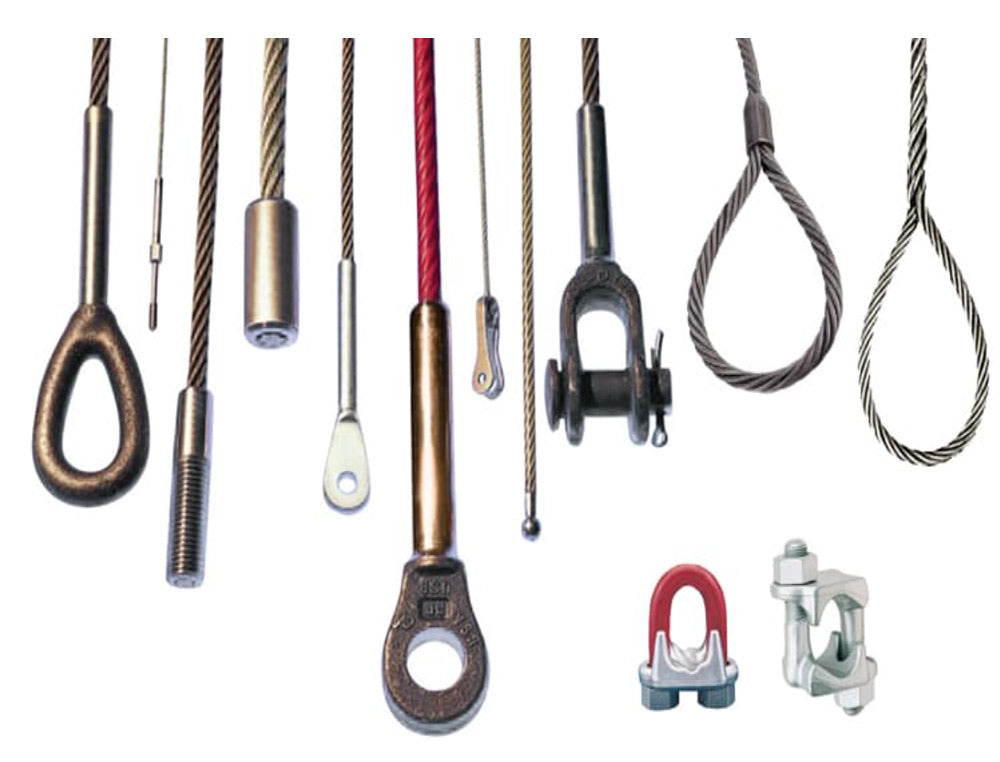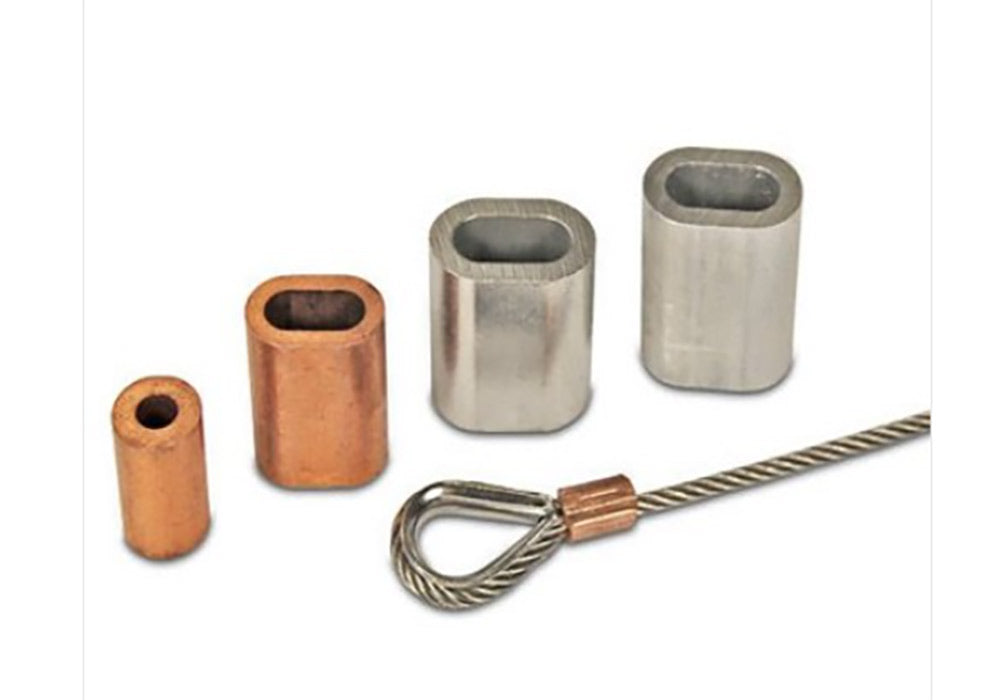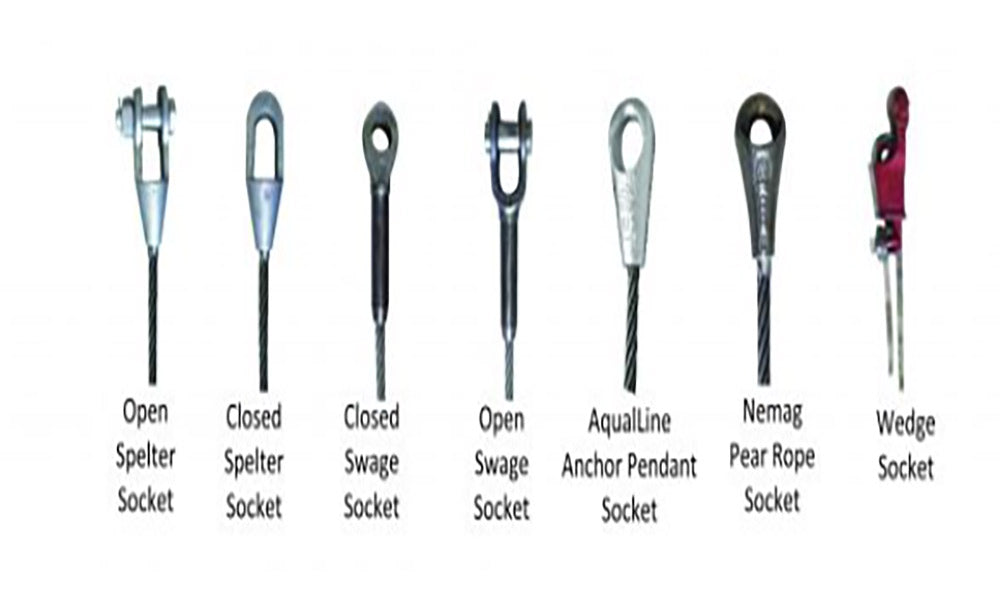C & C Lifting Ltd
MANUFACTURING WIRE ROPE END FITTINGS
WE HAVE A FEW WIRE ROPE SPLICING MACHINE WE CAN SUPPLY AND FIT MOST FITTING , THIMBLES, COPPER FERRULES, ALUMINIUM FERRULES , STAINLESS TERMINALS , FORK THREADED AND EYE TYPE AND END STOP ,
Wire ropes needing repair? Changing application requiring alteration to your wire rope? Wire rope splicing does it for your.
Find out how.
Wire rope splicing is essentially the formation of a knot between two parts of the same rope or between two separate ropes by separating and unravelling the strands and interweaving the threads together to produce a strong joint. Splicing forms a very strong knot which stays secure even if exposed to water.
TYPES OF WIRE ROPE SPLICING
There are different types of wire rope splicing. The two more common ones are
• Back or end splicing – This is a type of splicing where rope end strands are directly spliced without making a loop. With this wire rope splicing, rope ends are drawn to a close to prevent fraying.
• Eye splicing – This a more popular type of wire rope splicing which involves taking the working end of the rope to form a loop at the end. The end of the rope strands are unraveled, then passed over and under against the lay of the rope to interweave it back into the main length of the rope.
Other splicing techniques include
• The side splice intertwines one rope’s end to the midsection of another rope.
• A horseshoe splice is a splice on the two sides of the loop that are not equal in length.
• The short splice and the long splice joins the two rope ends together.
Generally a thimble is inserted in the eye if the rope is spliced onto a hook, pin, ring or shackle fitting. Wire rope splicing maintains almost 95% of the wire rope’s strength. You can employ splicing in three-strand braided ropes, or even in over 12-strand braided ropes.
USEFULNESS OF WIRE ROPE SPLICING
Splicing lets you create a new rope of any length, alter an existing rope to suit a changing application, or repair a damaged wire rope. There are two main disadvantages to splicing – the expanding thickness of the line at the joint and the distortion in the shape of the rope.
Wire ropes needing repair? Changing application requiring alteration to your wire rope? Wire rope splicing does it for your.
Find out how.
Wire rope splicing is essentially the formation of a knot between two parts of the same rope or between two separate ropes by separating and unravelling the strands and interweaving the threads together to produce a strong joint. Splicing forms a very strong knot which stays secure even if exposed to water.
TYPES OF WIRE ROPE SPLICING
There are different types of wire rope splicing. The two more common ones are
• Back or end splicing – This is a type of splicing where rope end strands are directly spliced without making a loop. With this wire rope splicing, rope ends are drawn to a close to prevent fraying.
• Eye splicing – This a more popular type of wire rope splicing which involves taking the working end of the rope to form a loop at the end. The end of the rope strands are unraveled, then passed over and under against the lay of the rope to interweave it back into the main length of the rope.
Other splicing techniques include
• The side splice intertwines one rope’s end to the midsection of another rope.
• A horseshoe splice is a splice on the two sides of the loop that are not equal in length.
• The short splice and the long splice joins the two rope ends together.
Generally a thimble is inserted in the eye if the rope is spliced onto a hook, pin, ring or shackle fitting. Wire rope splicing maintains almost 95% of the wire rope’s strength. You can employ splicing in three-strand braided ropes, or even in over 12-strand braided ropes.
USEFULNESS OF WIRE ROPE SPLICING
Splicing lets you create a new rope of any length, alter an existing rope to suit a changing application, or repair a damaged wire rope. There are two main disadvantages to splicing – the expanding thickness of the line at the joint and the distortion in the shape of the rope.
Share
